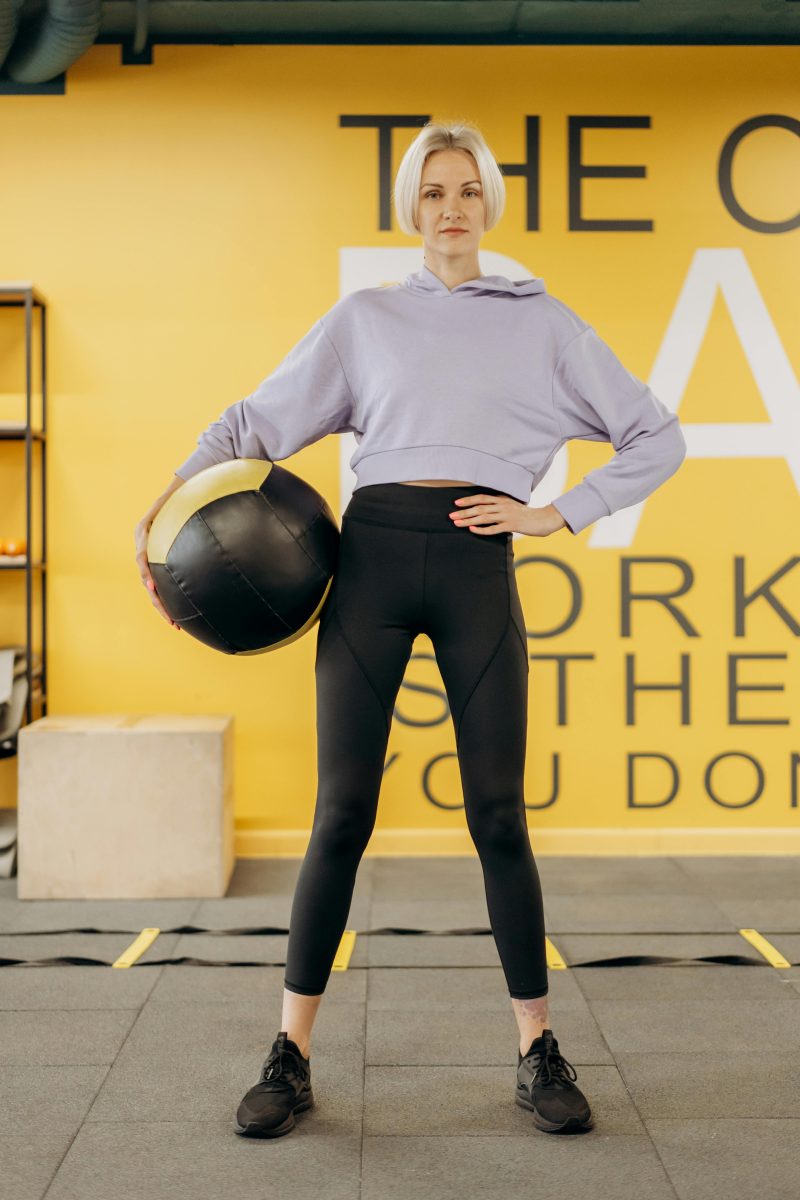Last Updated on: 14th July 2024, 08:54 am
Unlocking the Power of Flexibility and Mobility

Flexibility and mobility, often used interchangeably, are distinct yet interrelated concepts crucial for optimal physical performance and daily well-being. Flexibility refers to the ability of your muscles to stretch, while mobility is the range of motion available at a joint. A common misconception is that they are one and the same, leading many to focus solely on stretching exercises, neglecting the comprehensive approach needed for true joint mobility.
- The importance of these elements extends far beyond the gym.
- They are foundational for performing everyday activities with ease.
- Enhanced flexibility and mobility contribute to improved posture, reduced risk of injuries, and a significant decrease in everyday discomforts.
Embracing these concepts can transform your approach to physical health, leading to a more active, pain-free lifestyle. The journey to improved flexibility and mobility begins with understanding their unique roles and the synergistic effect they have on your overall well-being.
The Science Behind Flexibility and Mobility

Understanding the Physiology of Muscles and Joints
At the heart of flexibility and mobility lies the intricate physiology of muscles and joints. Muscles, composed of fibers that contract and extend, are pivotal for movement. Joints, the points where bones meet, facilitate this motion, allowing for a wide range of activities. Properly functioning muscles and joints are essential for maintaining flexibility and ensuring that mobility is not compromised.
How Flexibility and Mobility Contribute to Overall Health
- Flexibility aids in the prevention of injuries by allowing muscles to stretch more effectively.
- Mobility ensures that joints move freely, reducing the risk of pain and stiffness.
- Together, they contribute to a harmonious balance, promoting a healthier, more active lifestyle.
The Role of the Nervous System in Movement
The nervous system plays a crucial role in movement, acting as the command center. It sends signals to muscles, coordinating actions and reactions. This complex network is responsible for both voluntary movements, like walking, and involuntary ones, such as reflexes. A well-functioning nervous system ensures that our bodies respond appropriately to the demands of daily activities, highlighting the importance of nurturing our flexibility and mobility.
Understanding the science behind flexibility and mobility illuminates their significance in our lives. It’s not just about performing better athletically or achieving a wider range of motion. It’s about enhancing our quality of life, enabling us to move through our days with ease and confidence. By prioritizing these aspects of our health, we unlock the door to a more vibrant, active future.
Unlocking the Benefits of Improved Flexibility and Mobility

Enhanced Performance in Physical Activities
At the core of athletic excellence lies improved flexibility and mobility. These elements are the unsung heroes behind the scenes, significantly boosting performance across a wide array of physical activities. From the explosive power needed in sprinting to the enduring strength required in marathon running, flexibility and mobility work together to elevate your game.
Reduction in the Risk of Injuries
- Flexible muscles and mobile joints act as a buffer against the strains and sprains that often sideline athletes and fitness enthusiasts alike.
- By preparing the body to handle the unexpected, these qualities keep you active and out of the recovery room.
Improved Posture and Balance
Imagine standing taller, walking with grace, and balancing with ease. Improved flexibility and mobility contribute to these very outcomes, enhancing posture and balance. This not only projects confidence but also aligns the body in a way that supports overall health, reducing the likelihood of chronic pain and discomfort.
Increased Blood Flow and Nutrient Supply to Tissues
At the microscopic level, enhanced flexibility and mobility facilitate increased blood flow, ensuring that vital nutrients reach the tissues that need them most. This nourishment supports the healing and recovery process, promoting muscle growth and enhancing overall well-being. It’s a cycle of health that begins with the simple act of stretching and moving freely.
Integrating flexibility and mobility exercises into your fitness routine is not just an investment in your athletic performance; it’s a commitment to your long-term health and vitality. By embracing these principles, you unlock a world of benefits that extend far beyond the gym or playing field. It’s a journey towards a more active, balanced, and injury-free life.
Flexibility vs. Mobility: Understanding the Difference

Flexibility and mobility, while closely related, serve different functions in our quest for a balanced fitness regimen. Flexibility is the muscle’s ability to stretch temporarily, essential for achieving a full range of motion during exercises. Mobility, on the other hand, refers to the joints’ ability to move freely, which is crucial for performing functional movements in our daily lives.
- Flexibility allows for the elongation of muscles, facilitating movements that require a greater range of motion.
- Mobility ensures that these movements can be performed without restriction, allowing for a smoother, more efficient motion.
- Together, they create a synergy that enhances overall performance, whether in athletic endeavors or everyday tasks.
The importance of incorporating both flexibility and mobility into a fitness regimen cannot be overstated. Flexibility exercises, such as stretching, improve muscle elasticity, which can help prevent injuries and muscle soreness. Mobility exercises, such as joint rotations and dynamic stretches, improve the range of motion and fluidity of movements. This combination not only aids in injury prevention but also contributes to a more balanced, agile, and efficient body.
Ultimately, a focus on both flexibility and mobility is crucial for a well-rounded fitness approach. By dedicating time to both, individuals can enjoy improved posture, reduced risk of injury, and enhanced performance in physical activities. It’s not just about being able to touch your toes or squat deeper; it’s about moving through life with ease, grace, and confidence.
Practical Tips for Enhancing Flexibility and Mobility

Integrating flexibility and mobility exercises into your daily routine is simpler than you might think. With a focus on consistency and variety, you can significantly improve your range of motion and reduce stiffness. Here are some practical tips to get you started.
Recommended Stretching Exercises for Flexibility
Begin with dynamic stretches to warm up your muscles. Arm circles, leg swings, and gentle torso twists prepare your body for movement. Transition to static stretches post-workout, focusing on major muscle groups. The hamstring stretch, quadriceps stretch, and calf stretch are essential for lower body flexibility. For the upper body, incorporate shoulder stretches, tricep stretches, and wrist flexor stretches. Remember, the key is gentle, sustained pressure to enhance muscle elasticity without causing injury.
Mobility Drills for Different Parts of the Body
Mobility drills target joint health and range of motion. Shoulder rolls and arm rotations improve upper body mobility, essential for tasks that require lifting or reaching. Hip circles and leg swings benefit the lower body, enhancing your ability to walk, run, and squat with ease. Don’t overlook the importance of ankle and wrist mobility drills, as these smaller joints play a crucial role in daily activities.
Incorporating Flexibility and Mobility Work into Daily Routines
Make flexibility and mobility exercises a part of your daily life. Dedicate a few minutes each morning to dynamic stretches, setting a positive tone for the day. Incorporate mobility drills into your work breaks to counteract the stiffness from sitting. End your day with a series of static stretches, promoting muscle recovery and relaxation. By seamlessly integrating these exercises into your routine, you’ll notice significant improvements in your movement quality and overall well-being.
Embracing flexibility and mobility exercises is not just about enhancing physical performance; it’s about investing in your health and future. With these practical tips, you’re well on your way to moving more freely and living a more vibrant life. Remember, consistency is key. Start small, stay dedicated, and watch as your flexibility and mobility transform, unlocking a world of possibilities.
Overcoming Common Challenges in Flexibility and Mobility

Addressing Tightness and Limited Range of Motion
- Start with gentle movements, gradually increasing intensity to avoid overstretching.
- Incorporate dynamic stretches before workouts to progressively prepare the muscles and joints.
Strategies for Dealing with Discomfort During Stretching
- Focus on breathing deeply to ease tension in the muscles.
- Modify stretches to suit your level, using props like straps or blocks for support.
Staying Motivated and Tracking Progress
- Set realistic goals and celebrate small victories.
- Note improvements in how a stretch feels or use apps to record range of motion over time.
Overcoming these challenges is a step toward unlocking the full potential of your body’s flexibility and mobility. With consistent practice and a mindful approach, you’ll not only enhance your physical capabilities but also discover a new sense of freedom in your movements.
In Closing
Flexibility and mobility unlock life’s fluidity. They are the keystones of a vibrant, active existence. By harmonizing the body’s muscles and joints, they pave the way for a journey filled with improved health, reduced injuries, and enhanced daily performance. This article has illuminated the path toward integrating these critical elements into our lives, offering practical steps and overcoming common hurdles. Let’s commit to this journey, embracing flexibility and mobility as our allies in pursuing a life of boundless movement and potential.
Why Flexibility and Mobility Matter FAQs
While flexibility and mobility training are generally safe, performing exercises incorrectly or pushing the body too far can lead to injuries. It’s important to listen to your body and use proper techniques to avoid overstretching or straining muscles and joints. Consulting with a fitness professional can help ensure that exercises are performed safely and effectively.
Yes, flexibility and mobility exercises can significantly reduce stress by releasing muscle tension and promoting relaxation. These exercises improve blood flow, which helps in reducing cortisol levels and elevating mood. Engaging in regular stretching and mobility routines can also enhance mental clarity and reduce anxiety levels.
Flexibility and mobility play a critical role in aging well, as they help maintain independence and the ability to perform daily tasks. As we age, our joints and muscles naturally lose some of their elasticity, leading to decreased range of motion and increased risk of falls and injuries. Regular flexibility and mobility exercises can slow down this process, improving quality of life in older adults.
Flexibility and mobility training benefit mental health by reducing stress, anxiety, and depression symptoms. Engaging in these exercises promotes the release of endorphins, the body’s natural mood elevators, leading to a sense of well-being and relaxation. Additionally, the focus and mindfulness required during stretching and mobility work can provide a mental break and reduce symptoms of mental fatigue.
Flexibility contributes to overall health by improving blood circulation and reducing the risk of cardiovascular problems. It aids in the reduction of muscle soreness and tension, leading to a decrease in stress levels. Furthermore, it supports the health of the musculoskeletal system, preventing back pain and other chronic conditions.
One should practice flexibility and mobility exercises regularly, ideally daily, to see significant improvements. Consistency is key to increasing range of motion and preventing stiffness. Incorporating these exercises into a daily routine can help maintain and improve flexibility and mobility over time.
Flexibility refers to the ability of a muscle or muscle groups to lengthen passively through a range of motion, whereas mobility is the ability of a joint to move actively through its range of motion. Mobility requires strength, control, and flexibility to function properly. Understanding the difference is crucial for targeting specific areas for improvement in physical fitness and injury prevention.
Nutrition plays a significant role in improving flexibility and mobility by providing the body with the necessary nutrients to repair and maintain tissues. Adequate hydration and a diet rich in anti-inflammatory foods can enhance tissue elasticity and joint health. Consuming enough protein, vitamins, and minerals supports muscle recovery and strength, which are essential for mobility.
Flexibility is crucial for maintaining a range of motion in the joints and preventing injuries. It allows muscles to work most effectively, reducing the risk of muscle strains and pains. Improved flexibility also enhances overall physical performance and makes daily activities easier and more efficient.
Mobility training is vital for athletes as it enhances their performance by improving range of motion and functional movement patterns. It helps in preventing injuries by ensuring joints move freely and muscles are less prone to strains. Additionally, better mobility can lead to improved strength, power, and efficiency in sport-specific movements.
Orlando is a all round athlete from Australia, now resident in Germany. His sports of passion of American Football(Offensive line), weight training and indoor rock climbing where he uses his 195cm wing span to his advantage.



